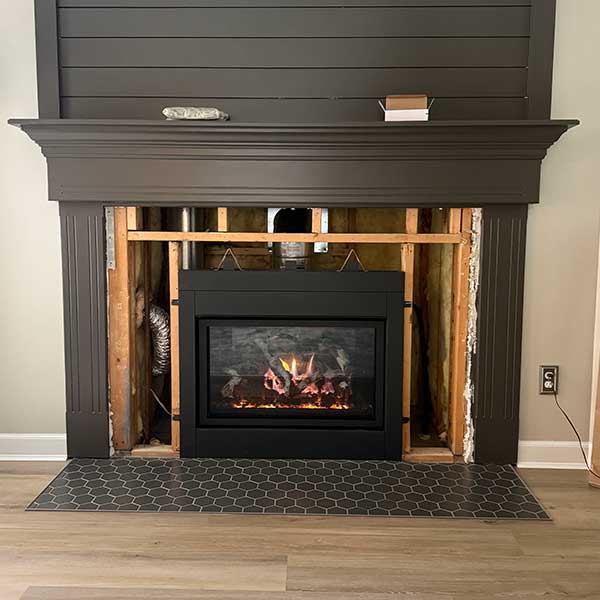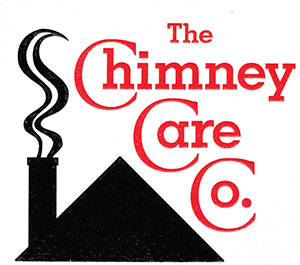The Chimney Care Company – Cincinnati’s Direct Vent Fireplace Experts
Direct vent gas technology gives homeowners a way to enjoy the warmth and ambiance of a fire without the inefficiencies and maintenance of wood-burning systems. These sealed appliances are designed to draw air from outdoors for combustion and send all exhaust back outside, keeping indoor air clean and minimizing heat loss. The Chimney Care Company offers three types of direct vent gas appliances: fireplaces for new installations or remodels, inserts for converting existing wood-burning fireplaces, and stoves for a freestanding option with powerful heat output. Each style brings its own advantages, and all are built for high performance and year-round comfort.
Whether you’re replacing an outdated system or starting from scratch, a direct vent appliance offers a great balance of efficiency, flame realism, and installation flexibility – and The Chimney Care Company team can help determine which one is right for your home.
Can a Gas Fireplace Be Direct Vented?
Many gas fireplaces, inserts, and stoves are specifically designed to be direct vented. Unlike traditional open-burning appliances, direct vent models use a sealed combustion chamber and a coaxial vent system (one pipe inside another) to keep combustion completely separate from indoor air. Fresh air is pulled from outside for combustion, and all fumes and byproducts are vented safely back outside through the same dual-channel system.
This setup offers several key benefits. Because the system is sealed, it doesn’t affect indoor air quality or home pressure balance. That means no backdrafting, no carbon monoxide concerns, and no loss of warm indoor air – a significant upgrade over open fireplaces or vented log sets. It also makes direct vent systems easier to install in newer, tightly sealed homes, where indoor ventilation is carefully regulated.
Direct vent appliances can be installed vertically through the roof or horizontally through an exterior wall, so placement options are more flexible than those for systems requiring a traditional chimney. Whether you’re outfitting a family room, basement, bedroom, or open-plan living area, direct vent units offer a reliable and attractive heat source that doesn’t require a major renovation.

Gas Stove Install

Gas Fireplace Install

Gas Fireplace Install
How Do You Keep Cold Air From Coming Through a Direct Vent Fireplace?
One of the most common concerns homeowners have with gas fireplaces – especially in colder climates – is unwanted cold air entering through the fireplace opening. With a properly installed direct vent unit, cold air intrusion should be minimal. But if you’re noticing drafts, there are a few possible causes and solutions.
First, it’s important to understand that a direct vent fireplace is a sealed unit. The firebox is separated from the room by a pane of tempered or ceramic glass, and all airflow should be confined to the venting system. If cold air is leaking into the room, it may be due to:
- Improper installation or venting gaps. If the venting system wasn’t sealed properly during installation, exterior air can find its way into the framing cavity or behind the surround.
- Missing or loose insulation around the unit. In some cases, the area around the fireplace wasn’t insulated or sealed correctly, allowing cold air to seep through the framing or gaps in the surround.
- Broken or warped glass pane. A damaged glass seal on the front of the unit can disrupt the pressure balance and allow exterior air to flow into the room.
To resolve these issues, a certified technician should inspect the vent seals, check the gasket around the glass pane, and ensure that the framing cavity around the unit is properly insulated. Some units may also offer an optional cold air blocking kit or draft barrier designed to reduce air transfer during long periods of inactivity.
A properly installed and maintained direct vent fireplace should not allow noticeable cold air to enter the home. If you’re experiencing drafts, it’s worth scheduling a chimney inspection to correct the issue and restore comfort.
Can You Leave a Direct Vent Fireplace on All Day or Night?
Direct vent fireplaces are built for extended use, and many models can run throughout the day without issue. Units with thermostats or programmable settings are designed to cycle on and off automatically, making all-day use during cold weather common and practical.
Leaving the fireplace on overnight depends on factors like room size, heat output, and whether the appliance has controls to prevent overheating. In smaller spaces or in models without built-in regulation, heat buildup and component wear can become concerns. Most modern units include features such as oxygen depletion sensors and automatic shutoffs intended to reduce risks, but it’s important to follow the manufacturer’s guidelines.
If your fireplace lacks advanced controls, it’s best to turn it off manually before going to sleep or leaving the house. The Chimney Care Company can help you review your model and advise on its appropriate use to help avoid issues and prolong its lifespan.
Ready To Upgrade to a Direct Vent Fireplace?
If you’re looking for a gas fireplace that delivers strong heat output, clean indoor air, and versatile installation options, a direct vent model might be the perfect fit. The Chimney Care Company carries a range of trusted, high-performance direct vent units and provides expert installation throughout the Cincinnati area. Reach out today to schedule a consultation!
